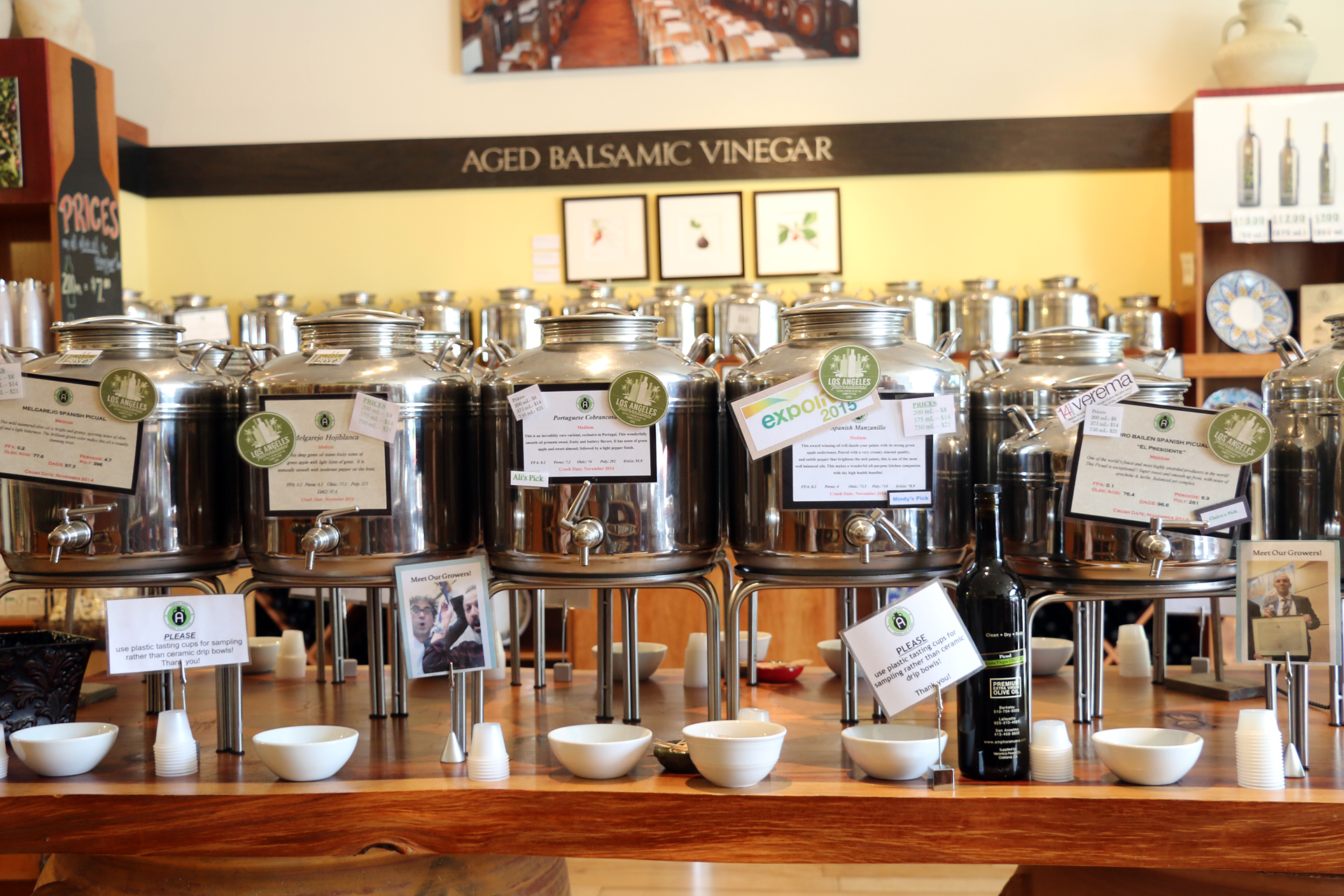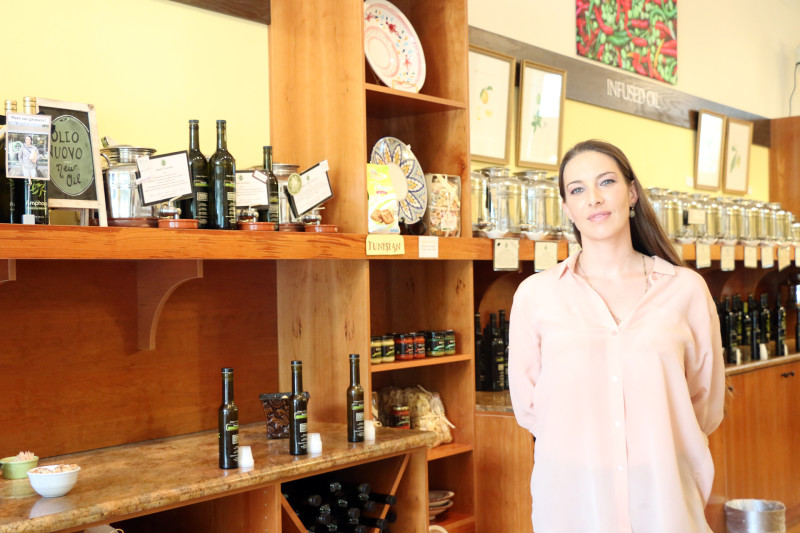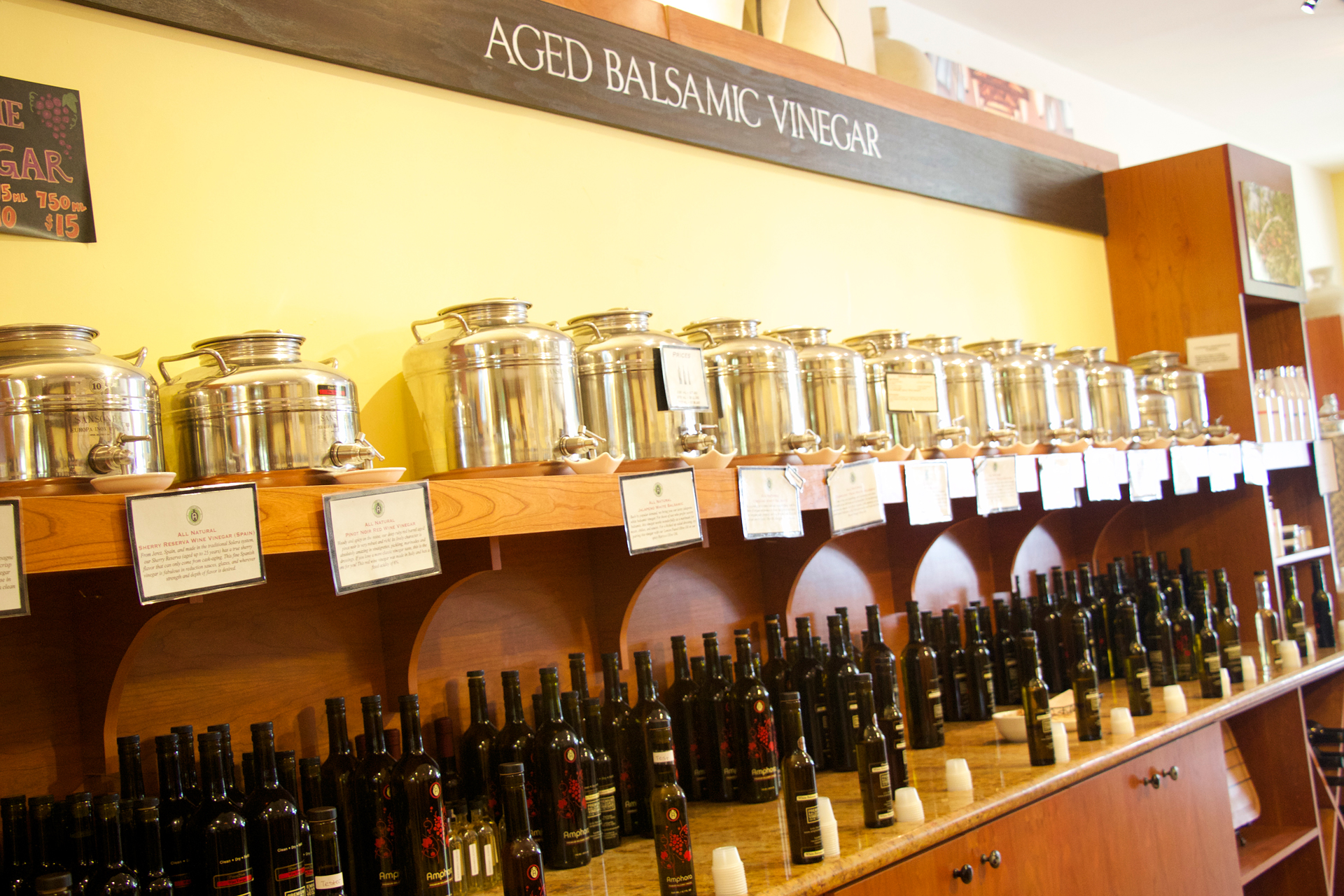Claire Bradley’s Neapolitan great-grandfather brought the family to Oakland in the late 1930s by way of Brooklyn, where he’d built a successful food-importing business. While Salvatore Esposito was interested in olive oil, it wasn’t a viable business proposition at the time, so the company focused on other Italian imports. In 1989, with the third generation at the helm, the family made a big decision to focus exclusively on sourcing the best olive oil possible. But they didn’t have a storefront then. Instead, the business model focused on bringing high quality olive oil to restaurants and other food businesses. They still count among their wholesale clients Annie’s Organic, Rick and Ann’s, Semifreddis, Cugini Manzone, and Duende.
Flash forward to 2010, when Amphora Nueva opened on Domingo Ave. in Berkeley, just below the Claremont Hotel. The shop is filled with fusti, food-grade stainless steel tanks, full of olive oil from Spain, Portugal, California, Italy, Chile, Australia, Peru, Argentina, Greece, and Tunisia. And a big 750 ml bottle will only run you between $13 and $21, a huge value compared to the equally delicious oils you’ll find in the shops off the square in Healdsburg or St. Helena, where olive oil is viewed more as a luxury commodity than a staple for daily use.
Amphora’s philosophy, says Bradley, is to make ultra-premium olive oil accessible to everyone: “We don’t see ourselves as a boutique. We don’t want people to say no to olive oil because of price.”
Their selections are seasonal because producers have two harvest seasons. In the northern hemisphere, the harvest begins in September or October, before the rain sets in. In the southern hemisphere, harvest mostly occurs in May and June. So, depending when you walk in to the store, you might see a Spanish hojiblanca or a Chilean coratina front and center. And the best news is you can taste any of the selections, which are clearly identified by harvest date, free fatty acids (FFA), phenolic content, and peroxide value. But what does all this mean?

Polyphenols are the humble olive’s best public relations tool, as their powerful antioxidants are largely what continues to sell Americans on the ingredient that much of the world has used as a base for cooking for thousands of years. But they also contribute significantly to the taste and style of the oil these diverse fruits yield. Do you like the burn at the back of your throat when you taste a bold, herbaceous olive oil? That’s polyphenol. Prefer a lighter, more buttery oil? Go for an oil lower in polyphenols. Whether you like the flavors that pack a polyphenol punch or not, Amphora can hook you up.

